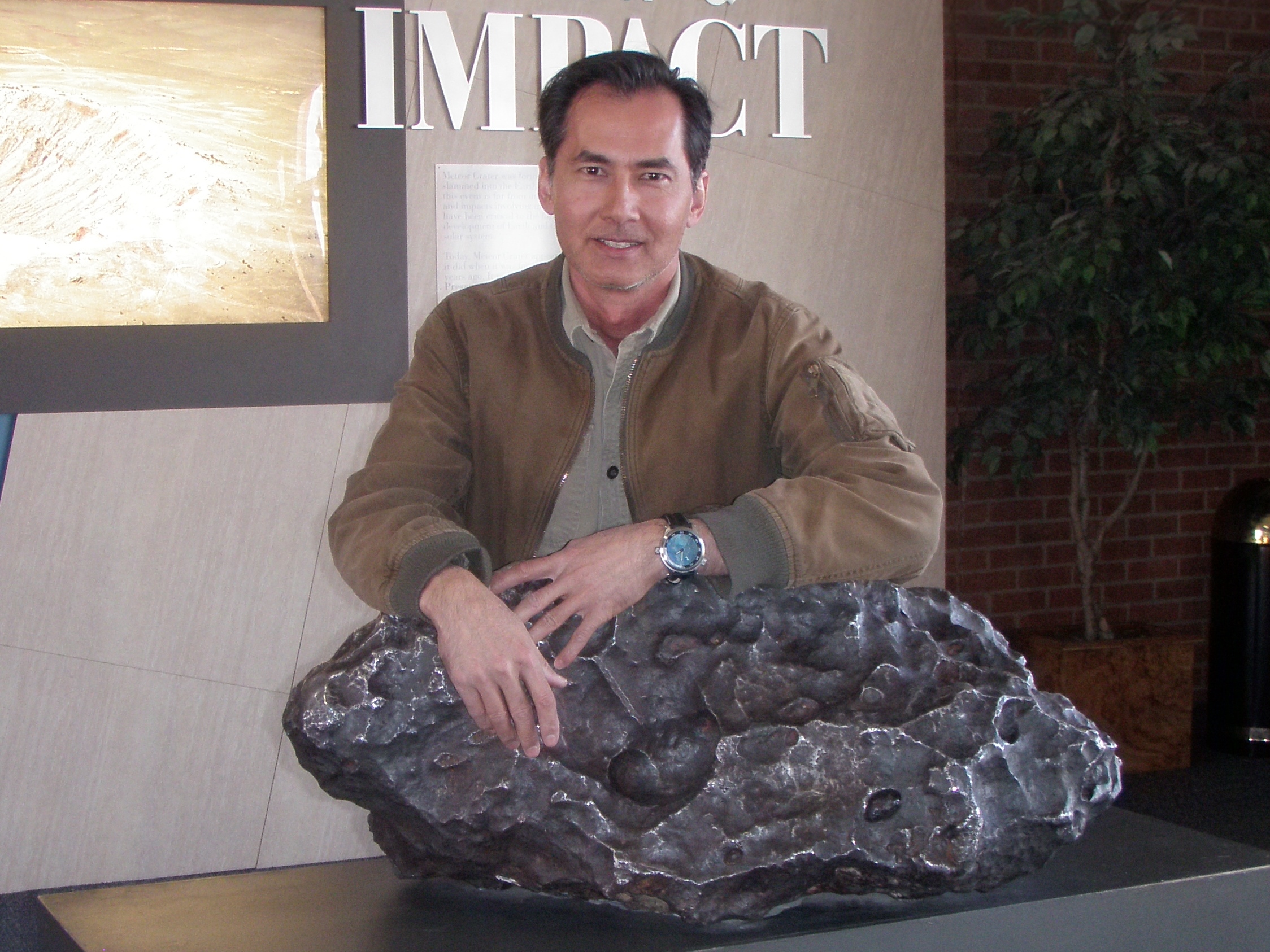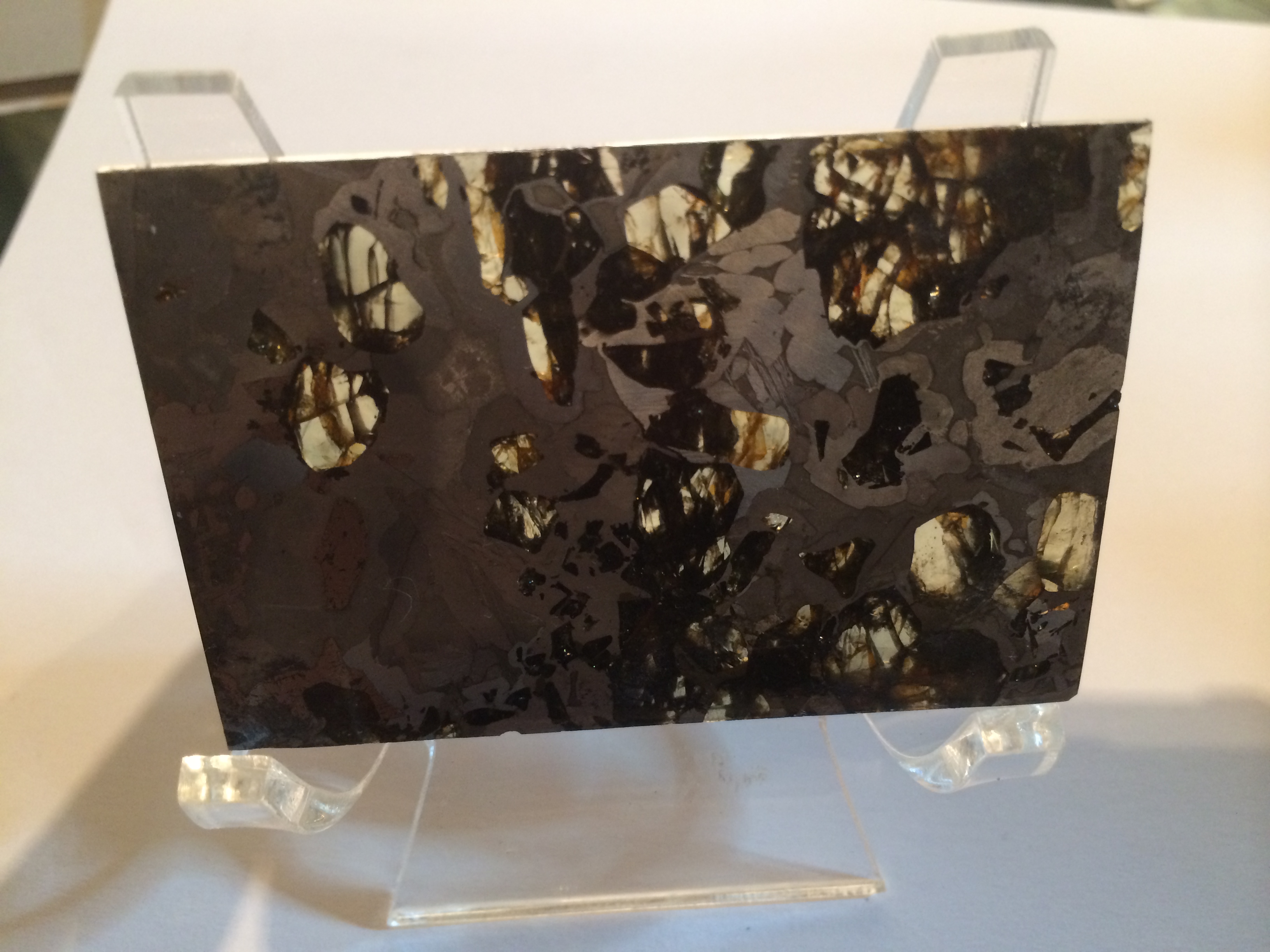










Meteor vs Meteorites, what is the difference? A meteor is the visible "shooting star" you see streaking across the sky at night. A meteorite is the leftover piece that actually makes it through the atmosphere without completely burning up. So actually the famous "Meteor Crater" in Arizona should really have been named the "Meteorite Crater".
Meteors are really moving when they enter the atmosphere at 161,000 miles per hour. That means they are going to dump a lot of energy on the way in and most will simply burn up. They can be stony,iron or both in composition. Most meteorites are ordinary stone, but a rare few have a fantastic metallic crystalline structure.
These meteorites are older than the oldest rocks on earth. These are thought to be the shattered iron and olivine cores of large bodies in the asteroid belt. The earth's core is mostly of the same composition as meteorites, namely iron, olivine and nickel. In order to determine how old the earth is, they examined the "Meteor Crater" meteorite and used its age of four and a half billion years as the upper bound for the age of the earth. (See Wikipedia for more)

I am making dials from meteorites that have impacted in Namibia, Sweden, Argentina, Russia, and even locally in Arizona. Each meteorite that I use is a known meteorite with a specific verifiable history. Generally I start by buying a slab of meteorite from a meteorite collector. I usually start with a chunk of 50 grams and machine it down to a very thin disk of only 5 grams.
Many of my dials feature the now impossible to obtain "Gibeon" metorite which is an iron with nickel meteorite that impacted Namibia thousands of years ago and was discovered in 1836. This material has beautiful interlaced taenite and kamacite crystals in an octahedral shape (visualize two Egyptian pyramids glued together at the base). These crystal patterns are called Widmanstatten lines. They appear after careful polishing and etching with acid. Even though iron/nickel alloys are used today in turbine engines, these beautiful crystals cannot be duplicated by man because they can only be formed in zero gravity at a very slow cooling rate (estimated at one degree per million years). Since then I have worked with other metal and stone meteorites. Some even have beautiful olivine gemstones embedded in the iron matrix. Others are stony meteorites that have been blasted off the surface of Mars and the Moon and command prices that exceed precious metals by orders of magnitude. They are the rarest materials on earth and are not easily found since they are barely attracted to a magnet. The best hunting is on the ice of Antarctica and the sands of the Sahara. A slice of the moon large enough for a watch can command a price of up to $700 per gram. There are slices of a rare Martian meteorite that are selling for over $1000 per gram. There is talk of meteorites thought to be from Venus and Mercury and those will be even more expensive if ever confirmed.
In 2013 a milestone was achieved with No. 60 Bella Luna, the first watch to feature an full dial made from a slice of the moon.
I have made two watches from Martian meteorites but that was done by previously by Corum for a small run of 30 watches which now sell for $50,000 each when they surface occasionally.
On May 7,2009 I introduced the world's first Blue Meteorite™ watch. since then I have been able to produce an exciting array of Colored Meteorites™. Heat and acid are used to tease out each color and there are no coatings or dyes.
Watches can be ordered with meteorites in a variety of colors besides the natural silver. Please scroll through the collection to see the full range of colors. There are also more color hues which have not been ordered yet into a watch. The basic colors listed below and a few examples are shown.
Gold Meteorite™ Brown Meteorite™, Aqua Meteorite™, Blue Meteorite™, Purple Meteorite™, Chromatic Meteorite™, and Black Meteorite™ (New 2014)





